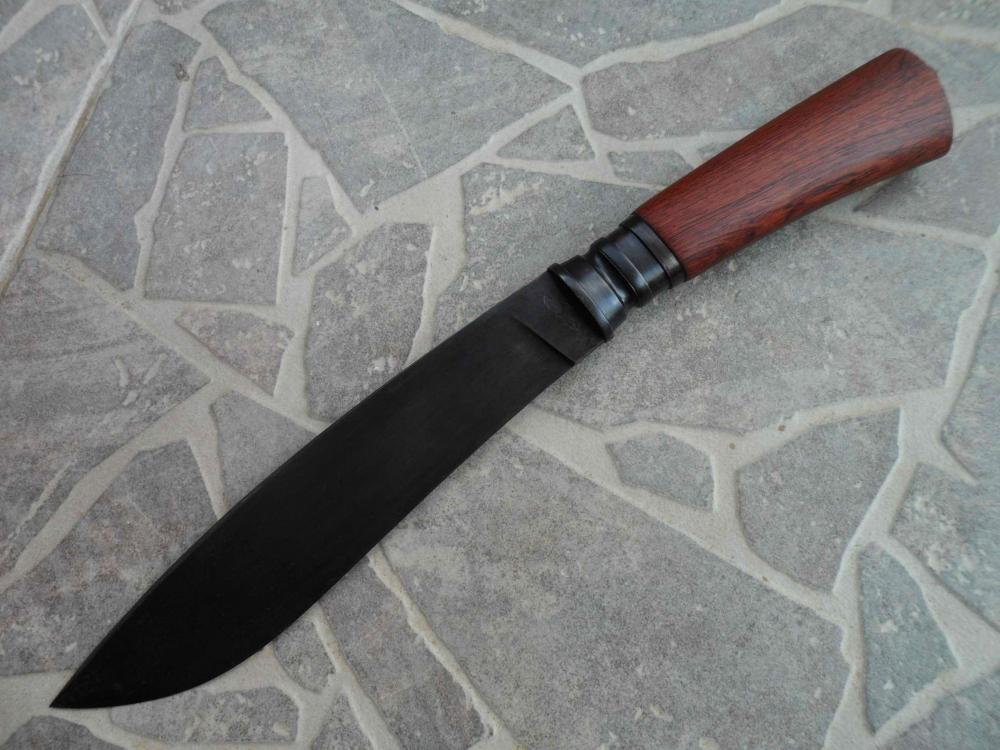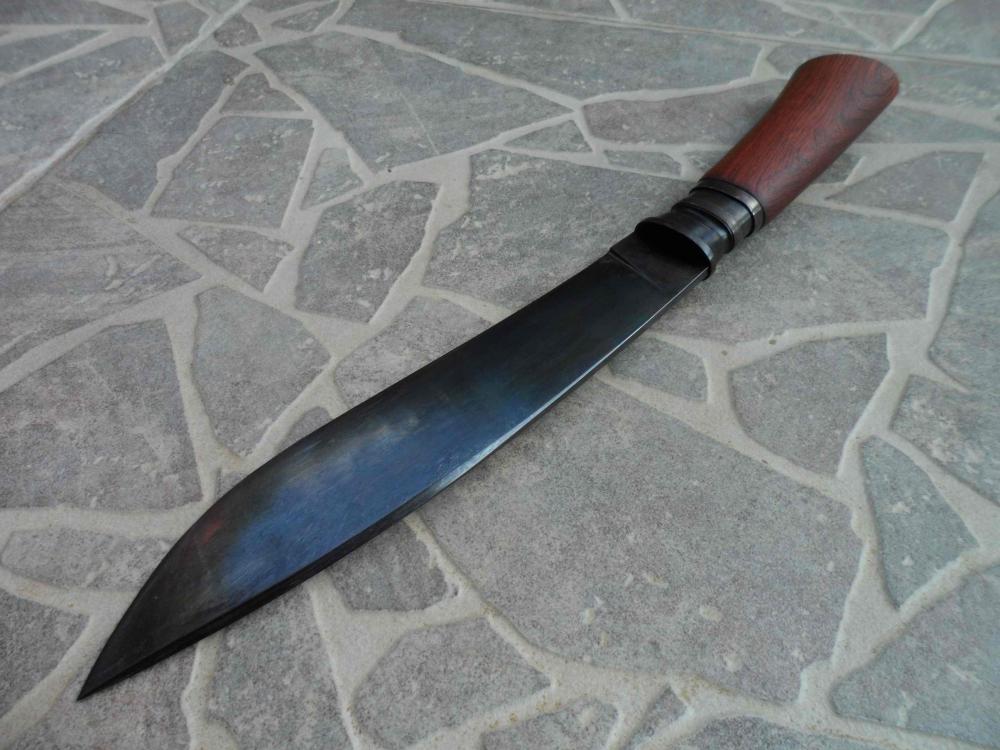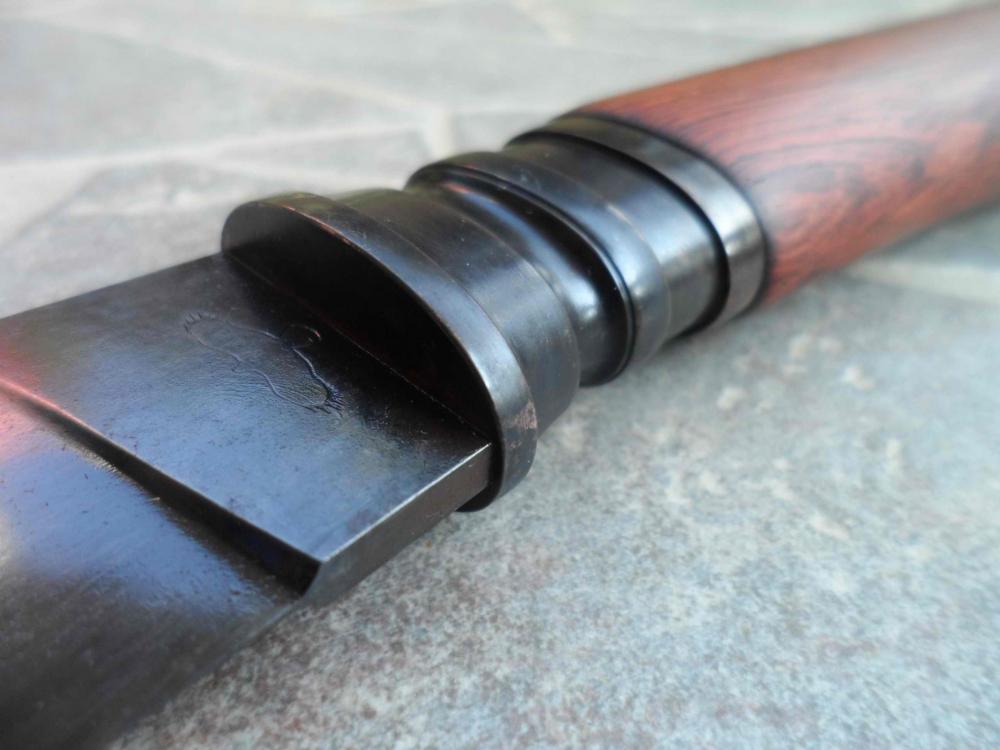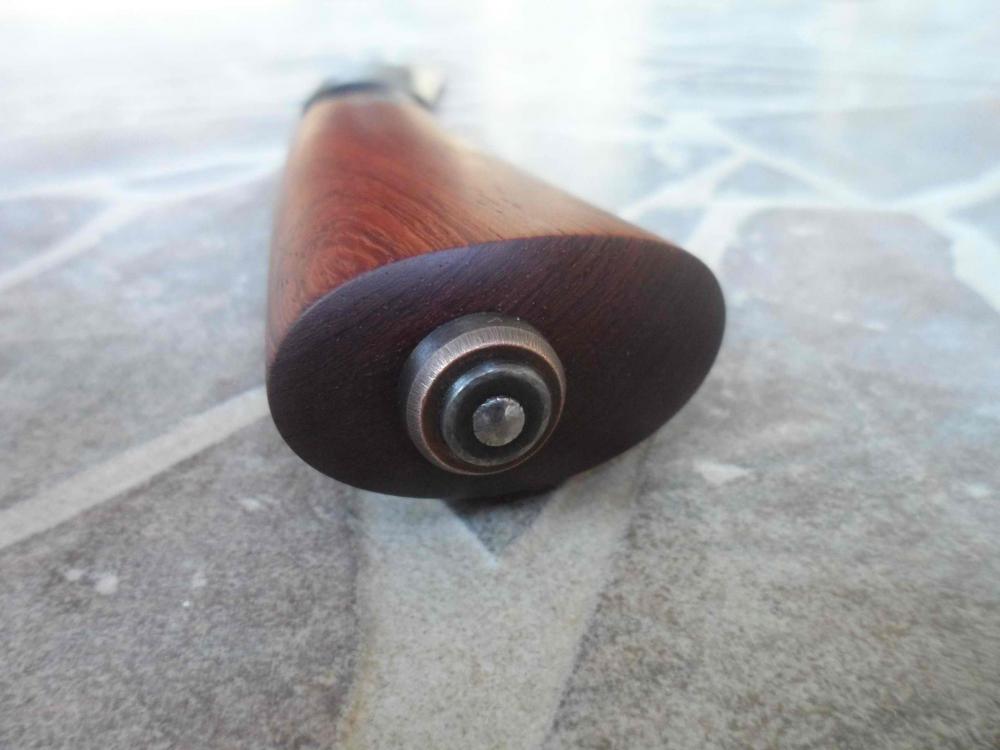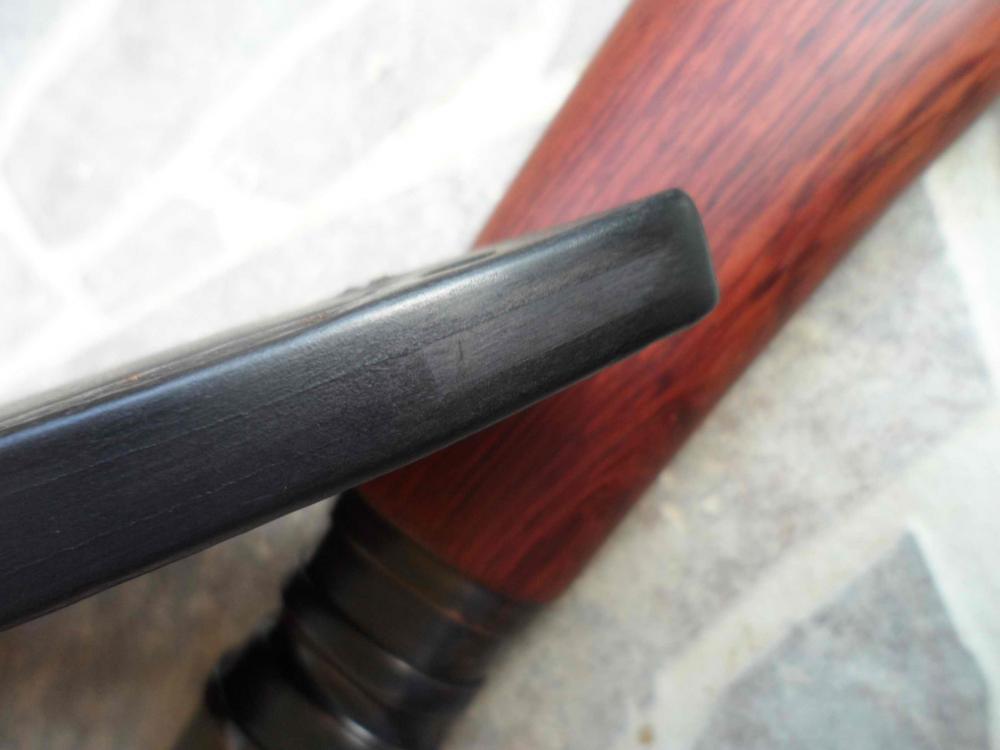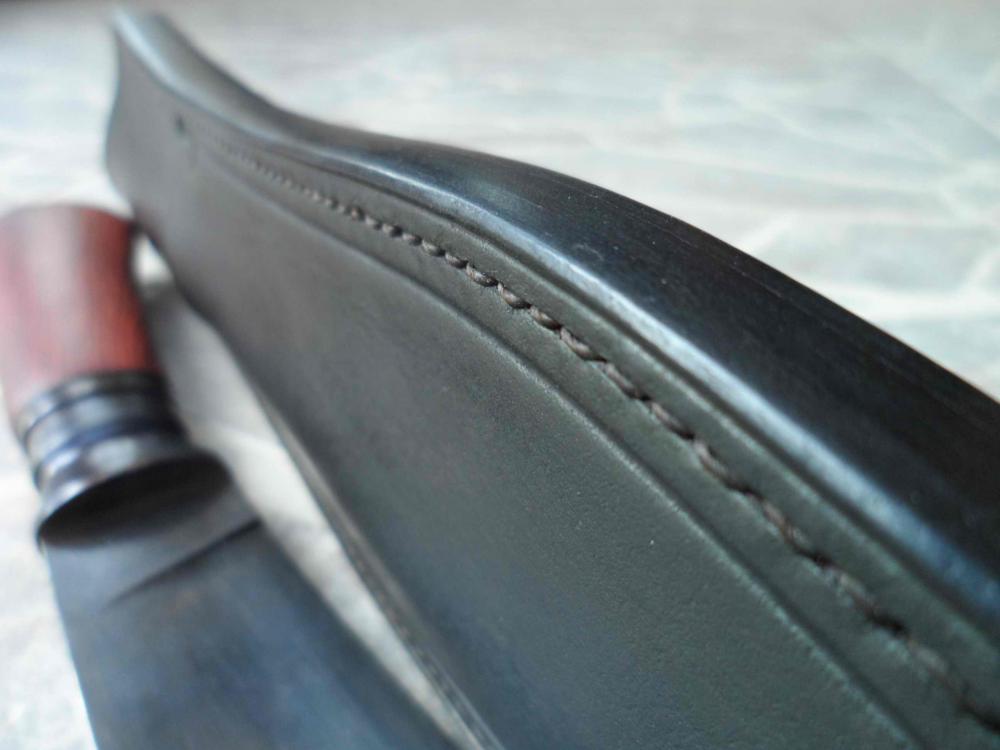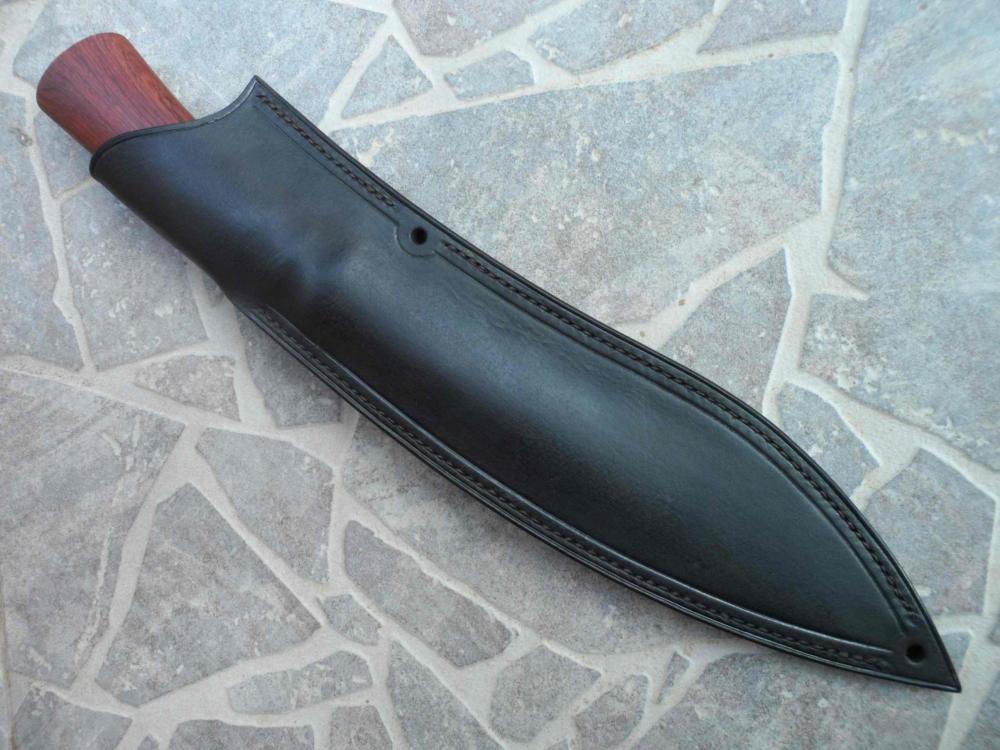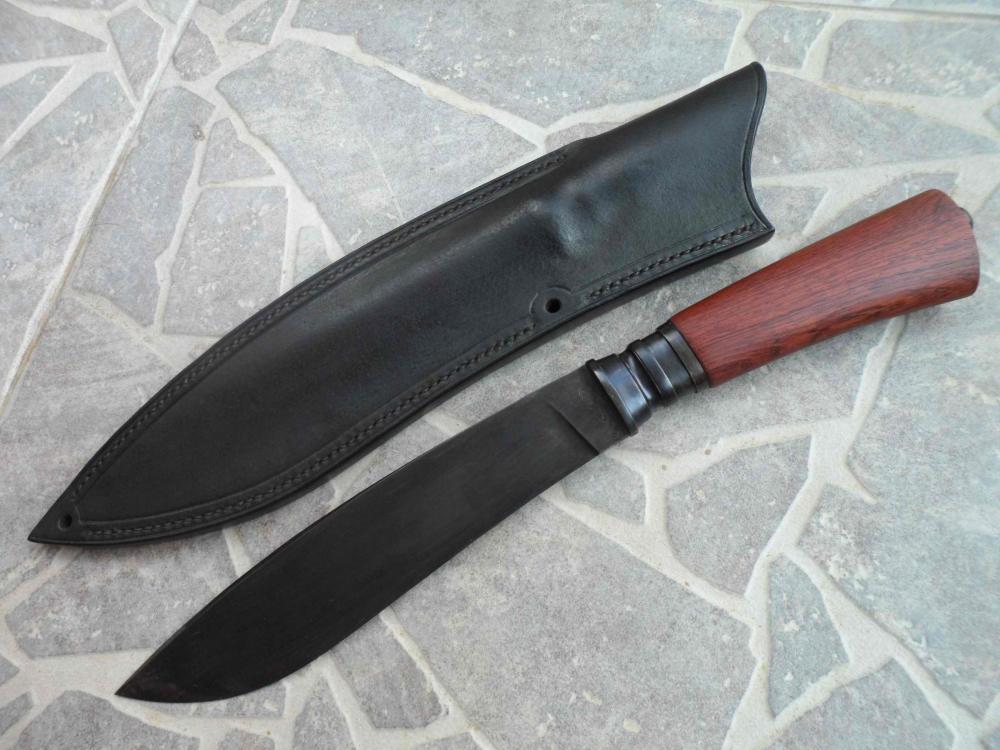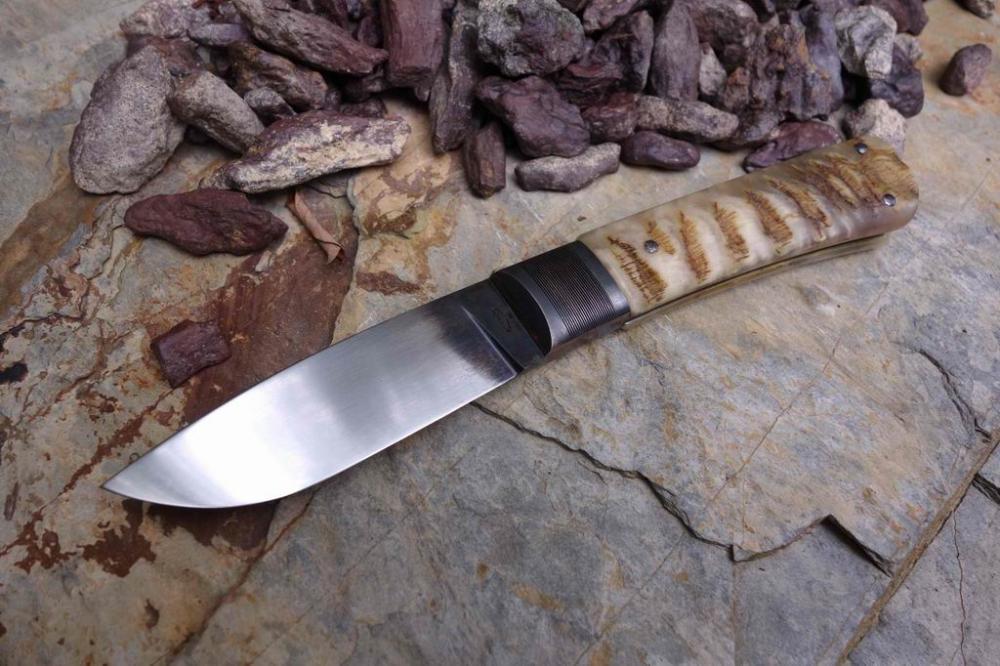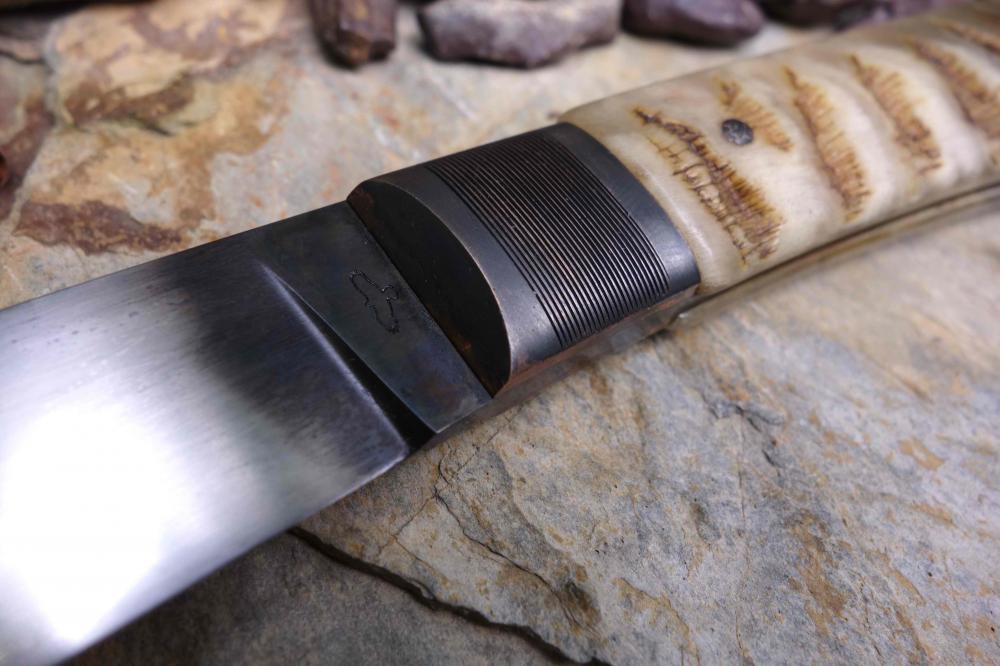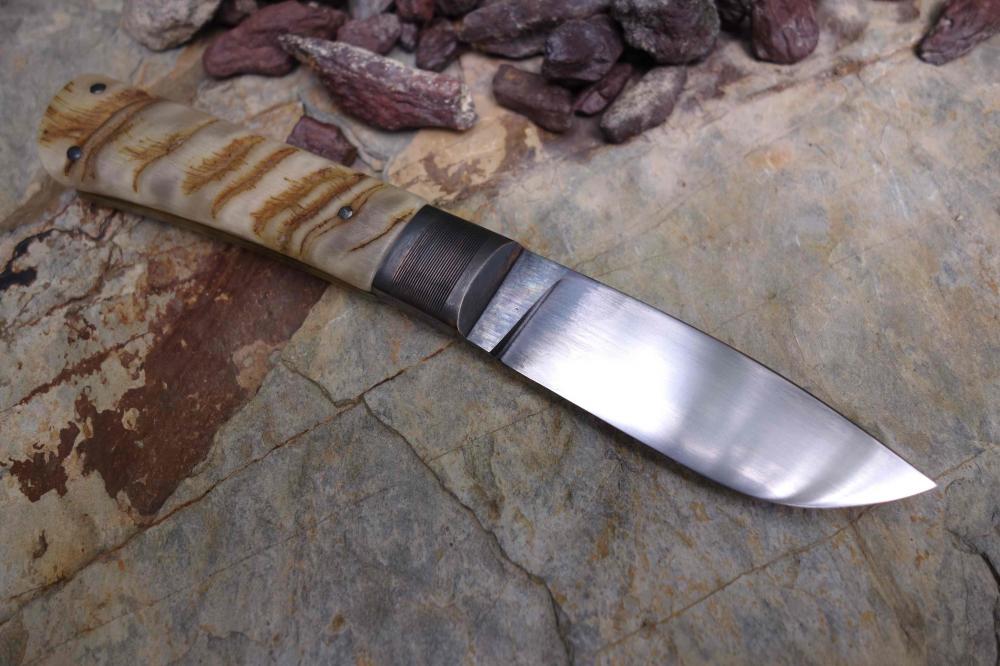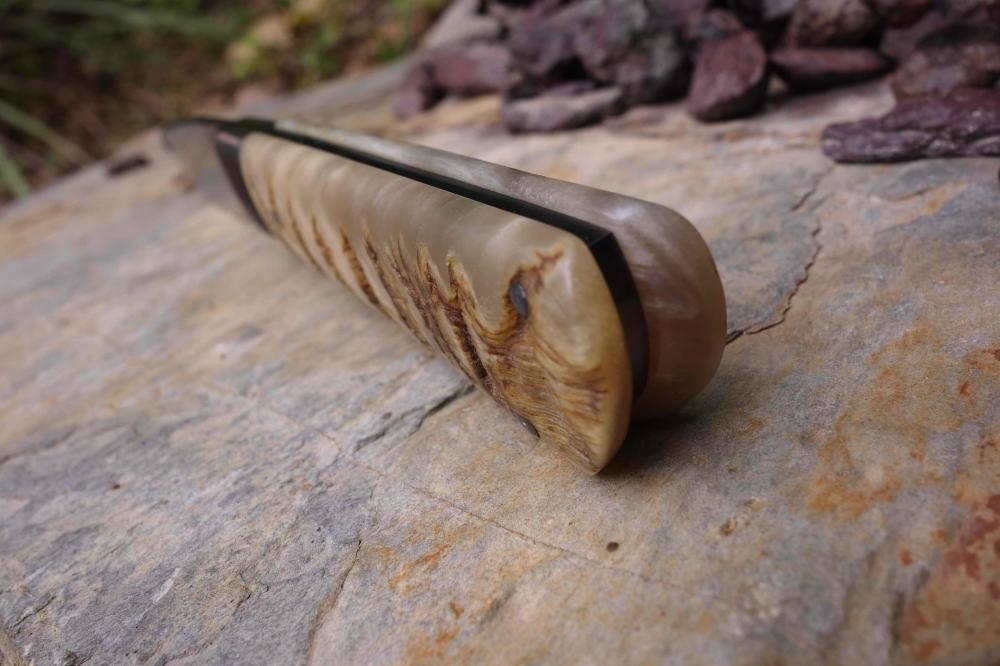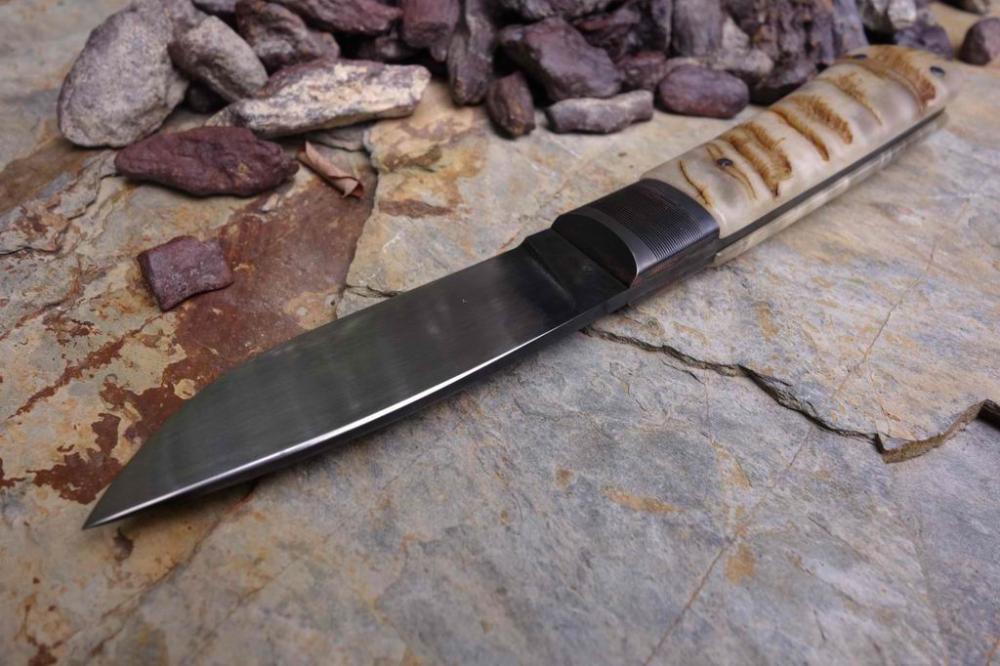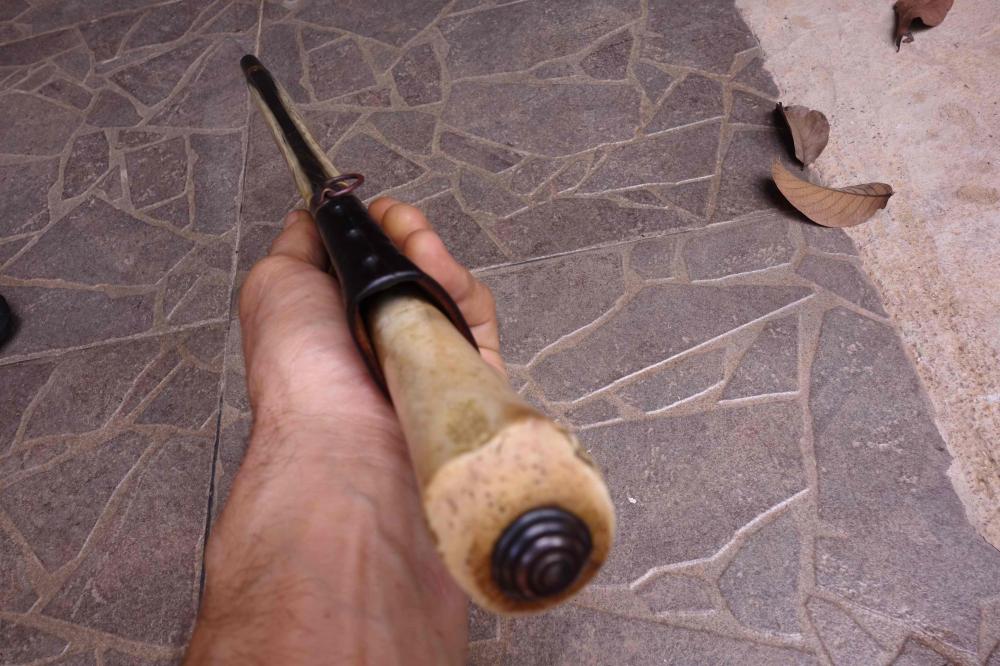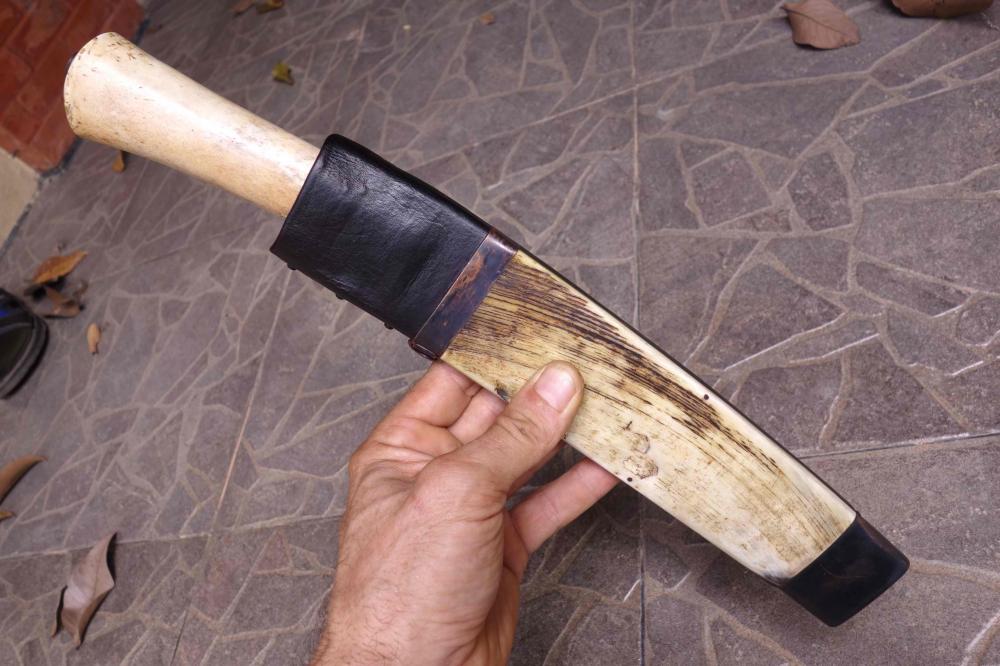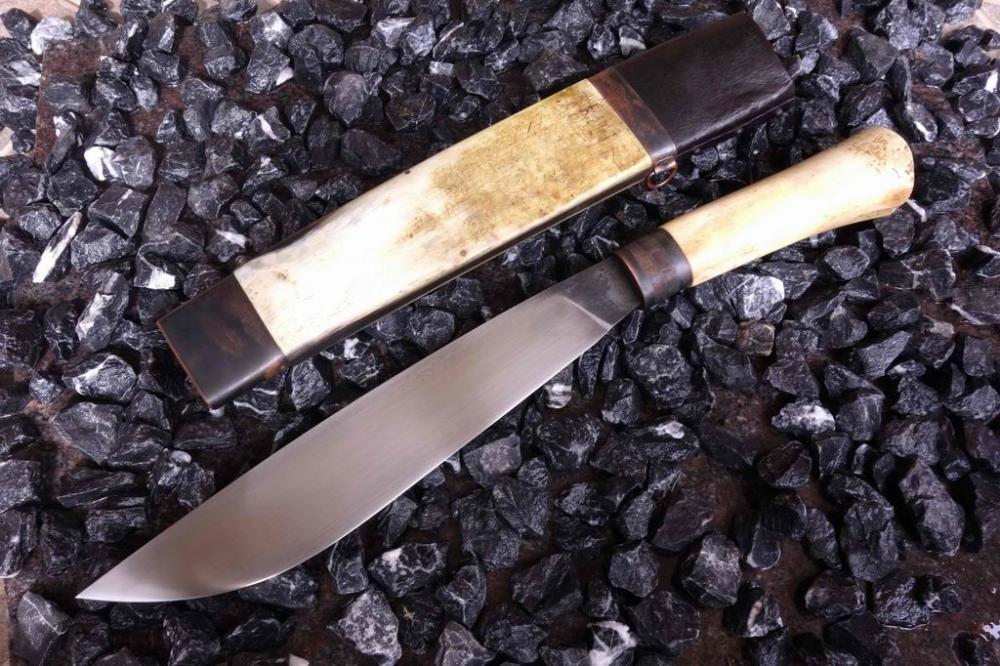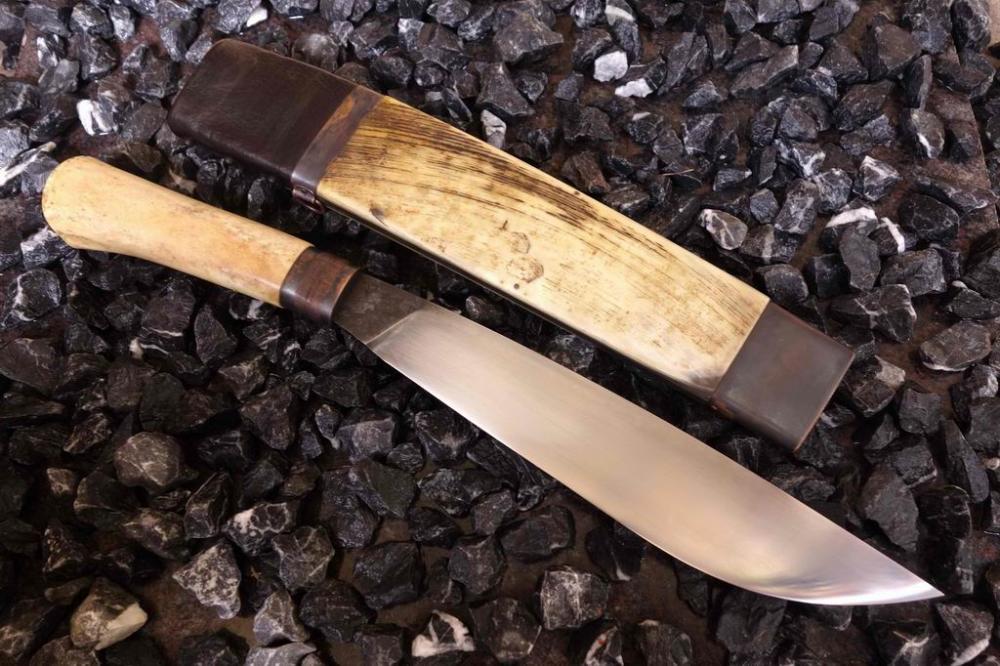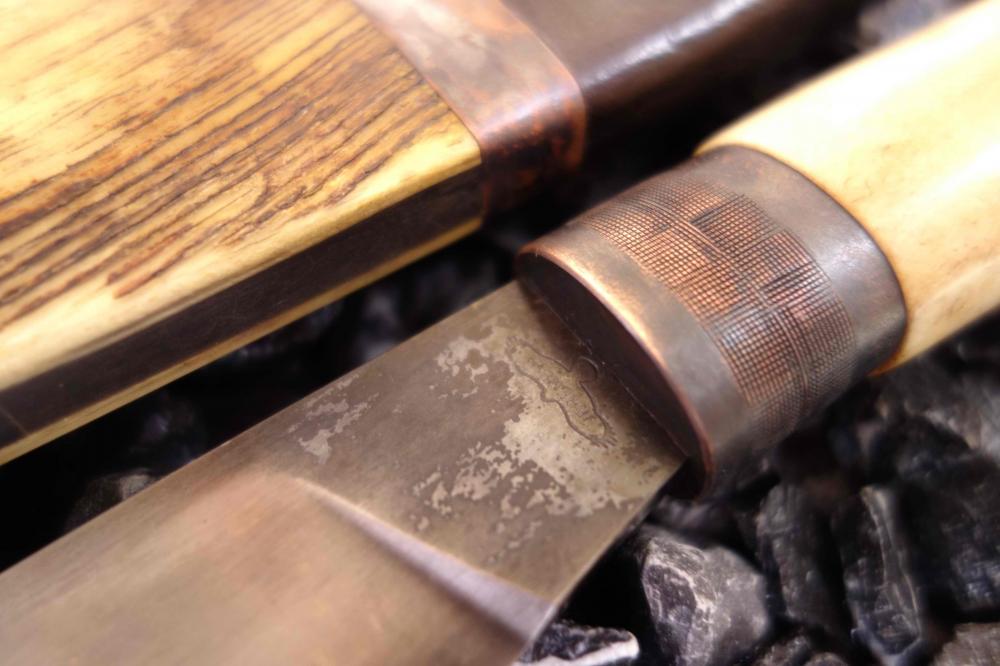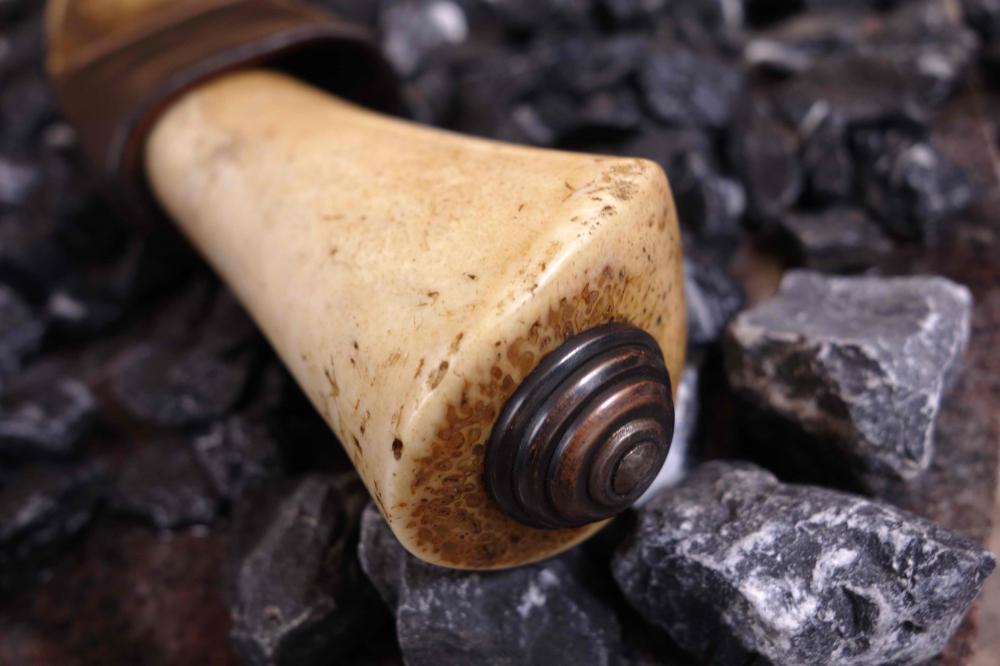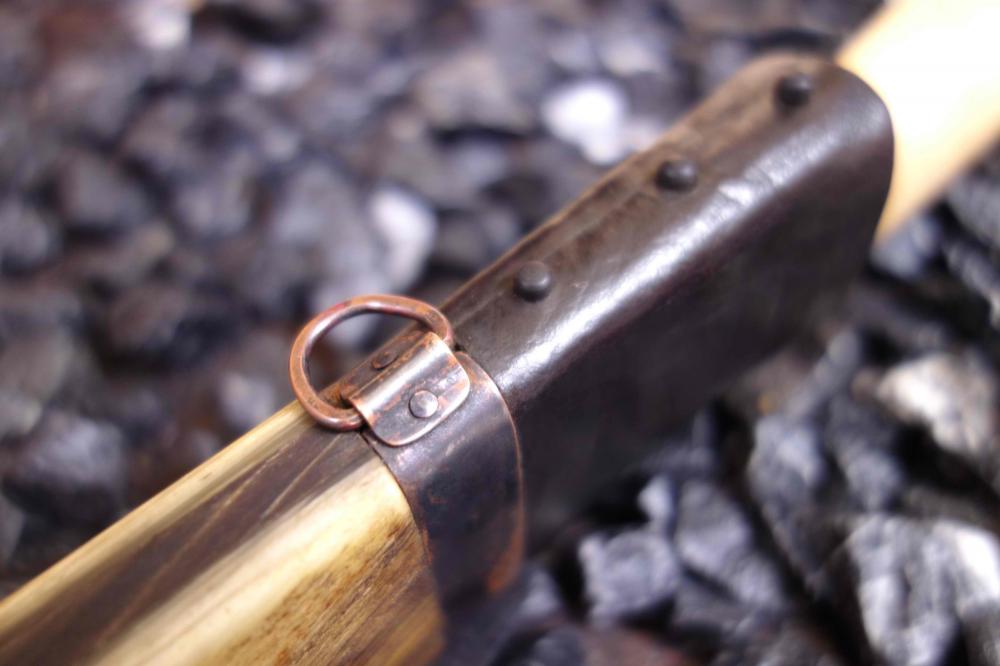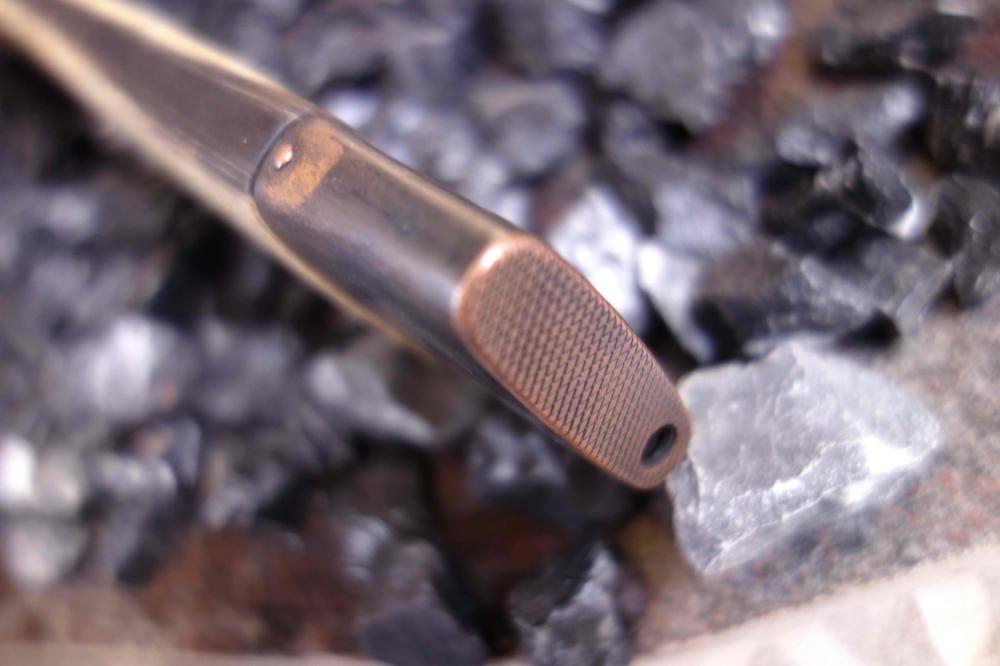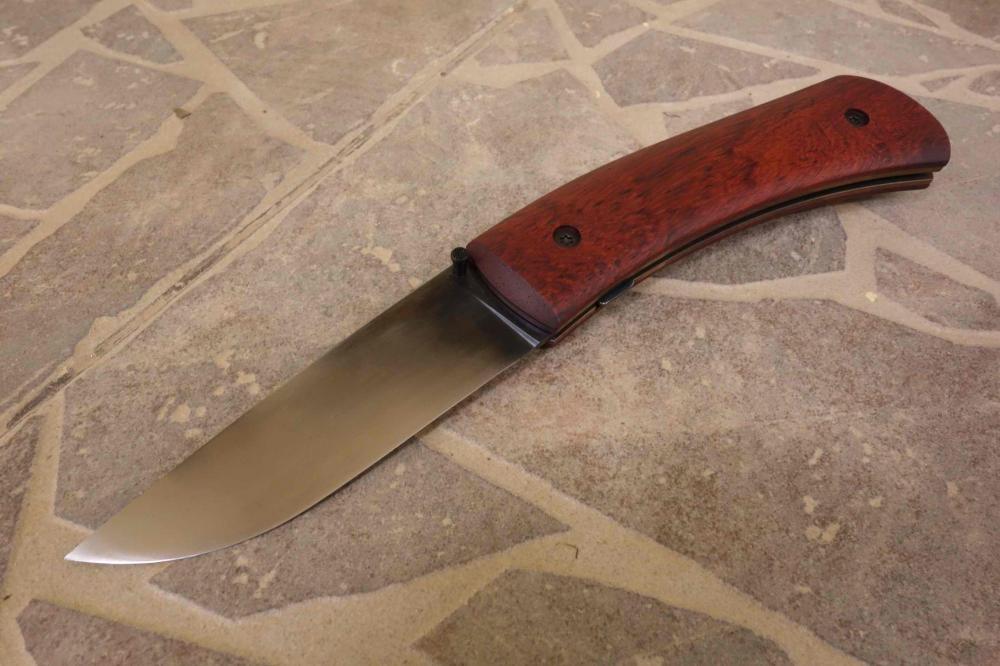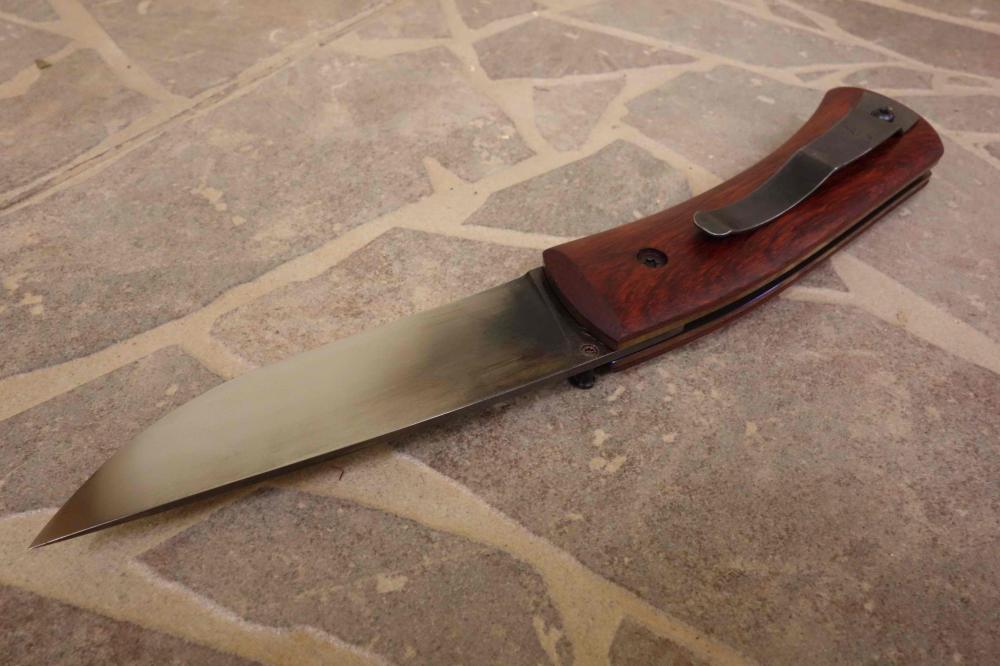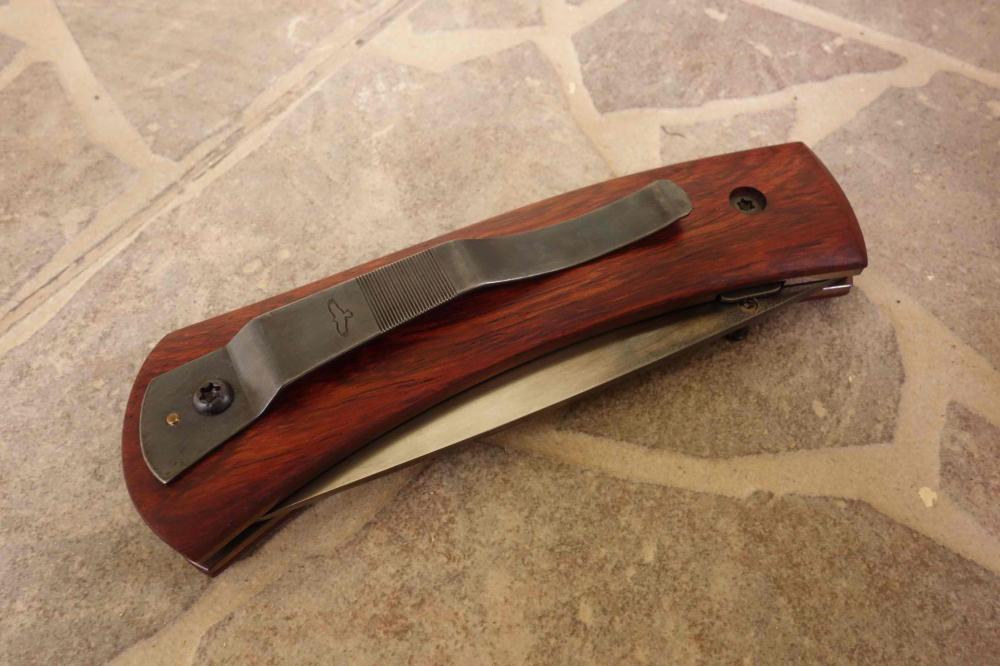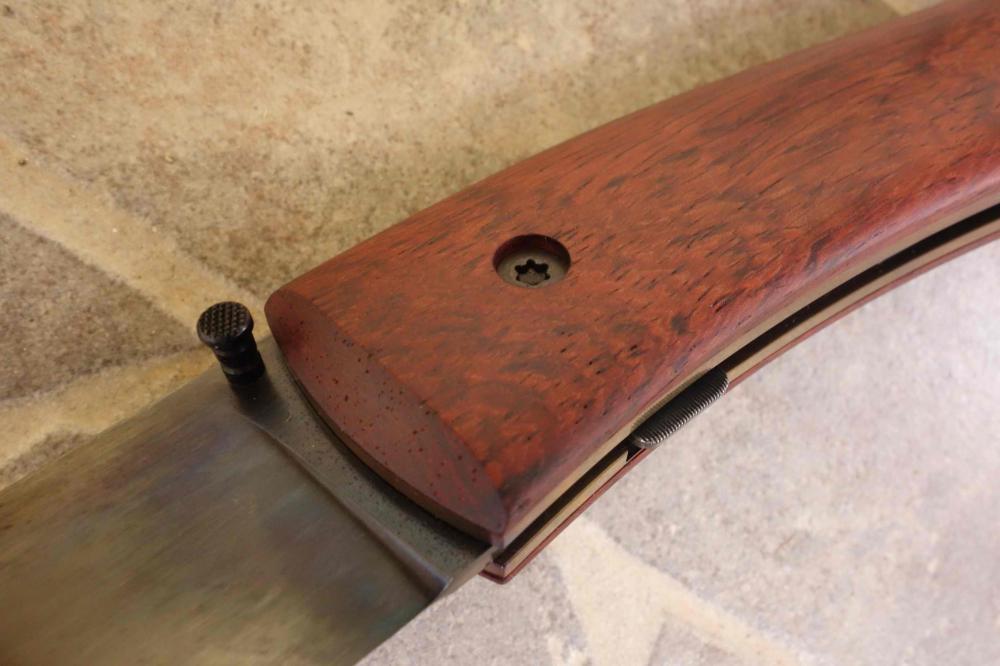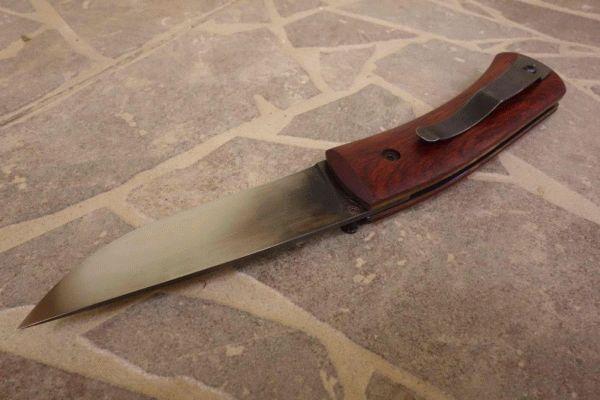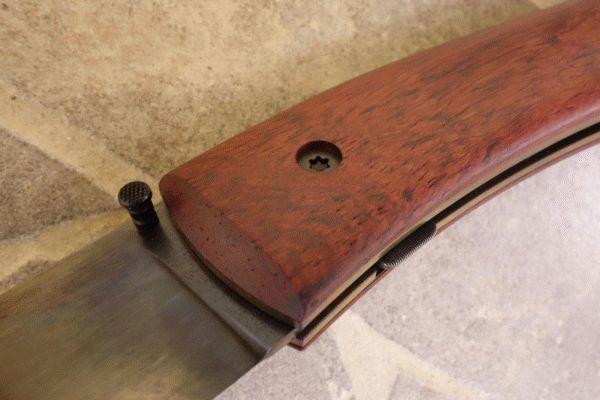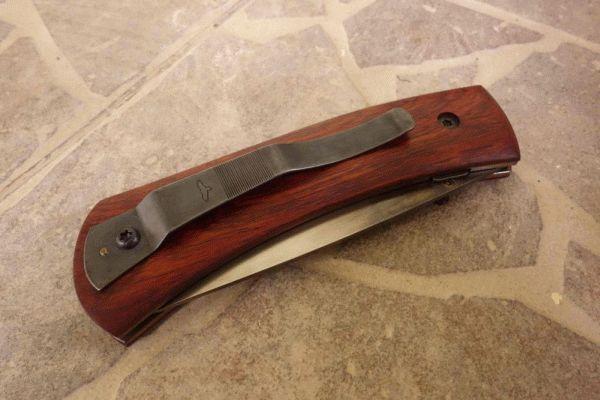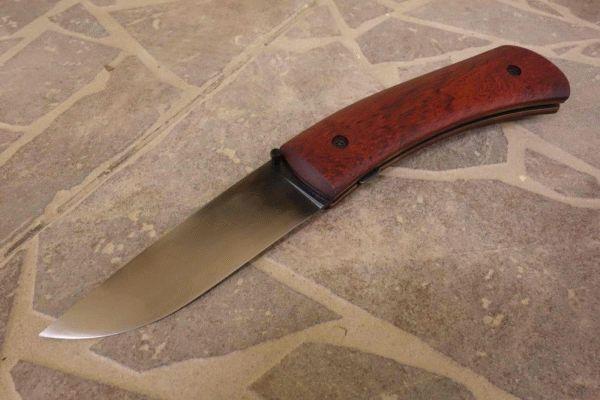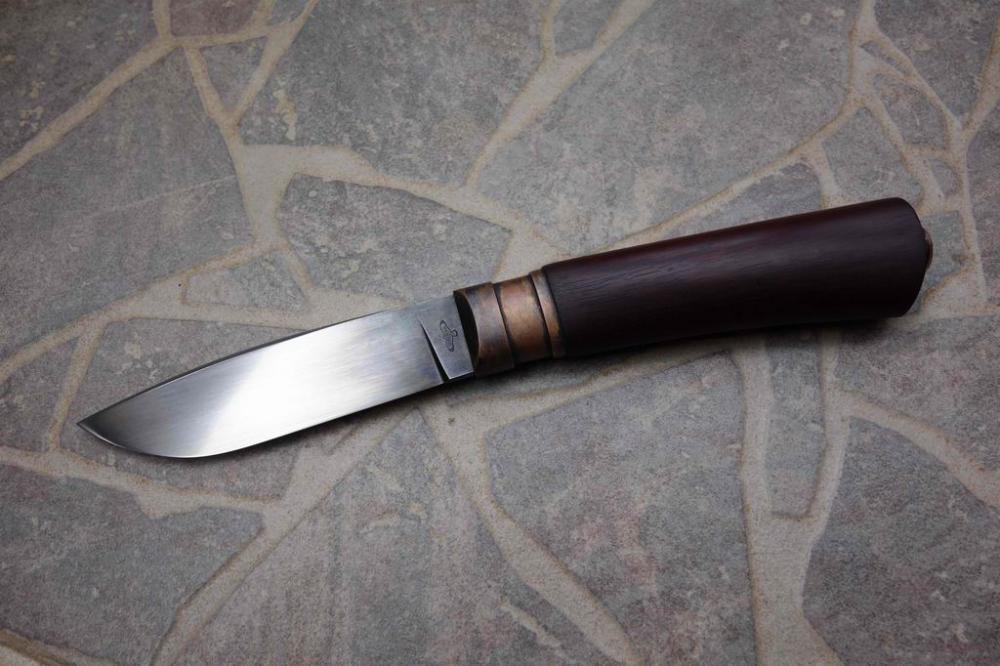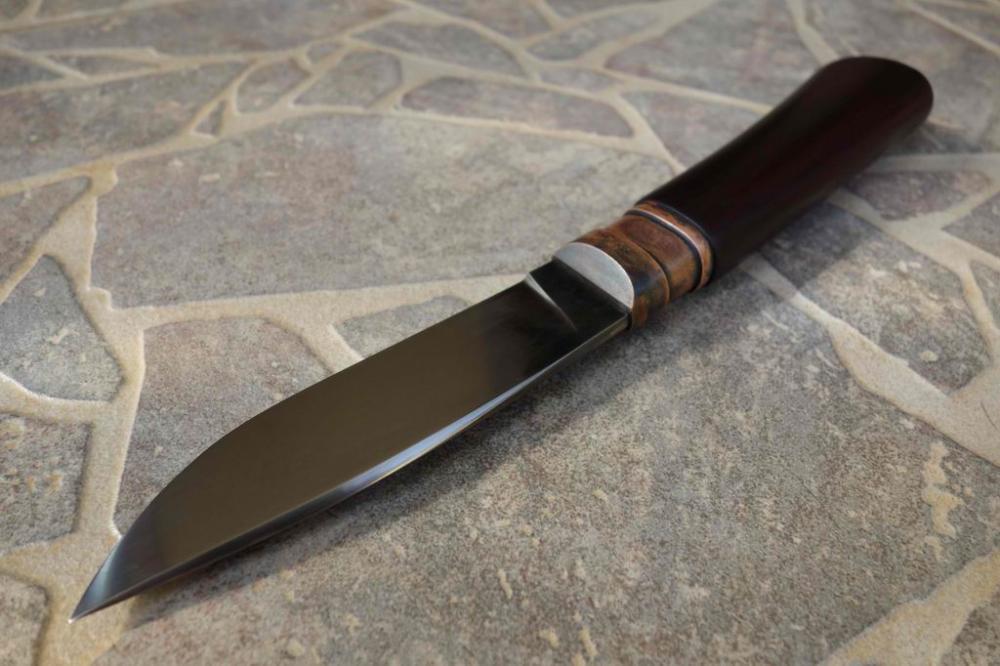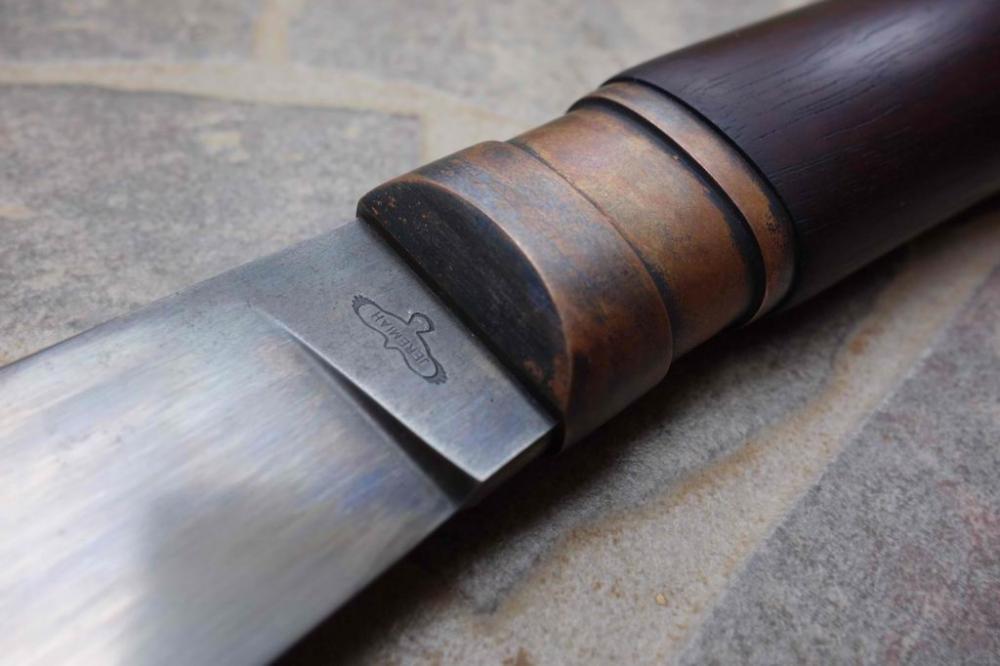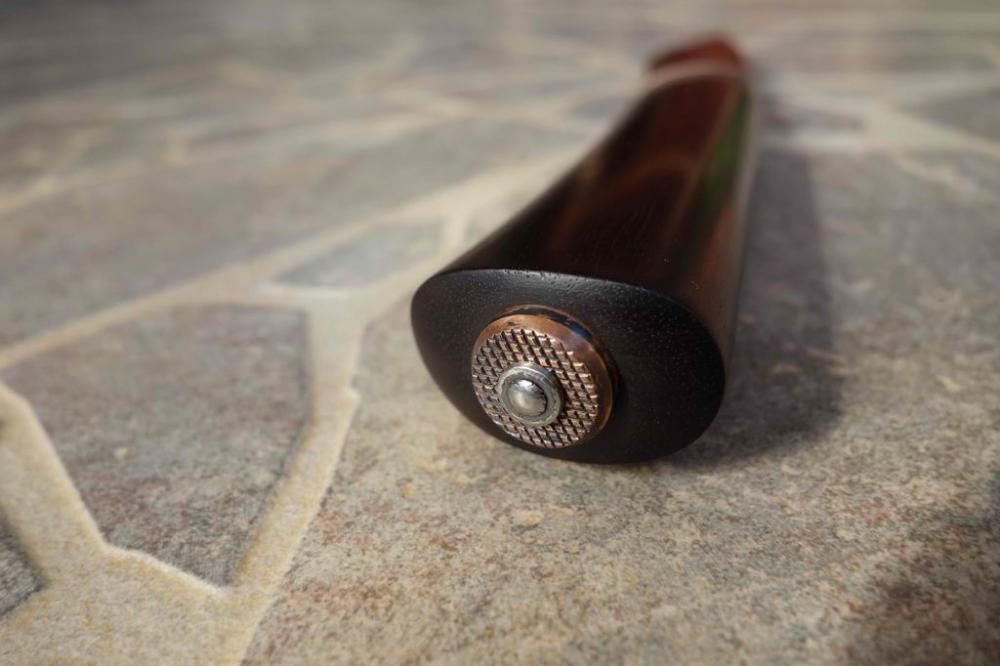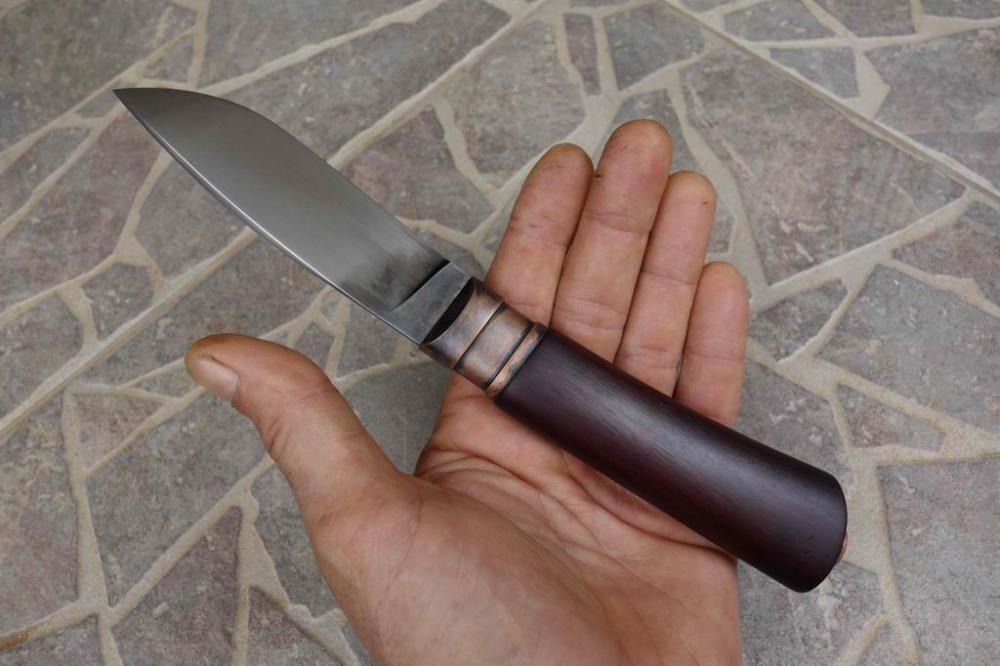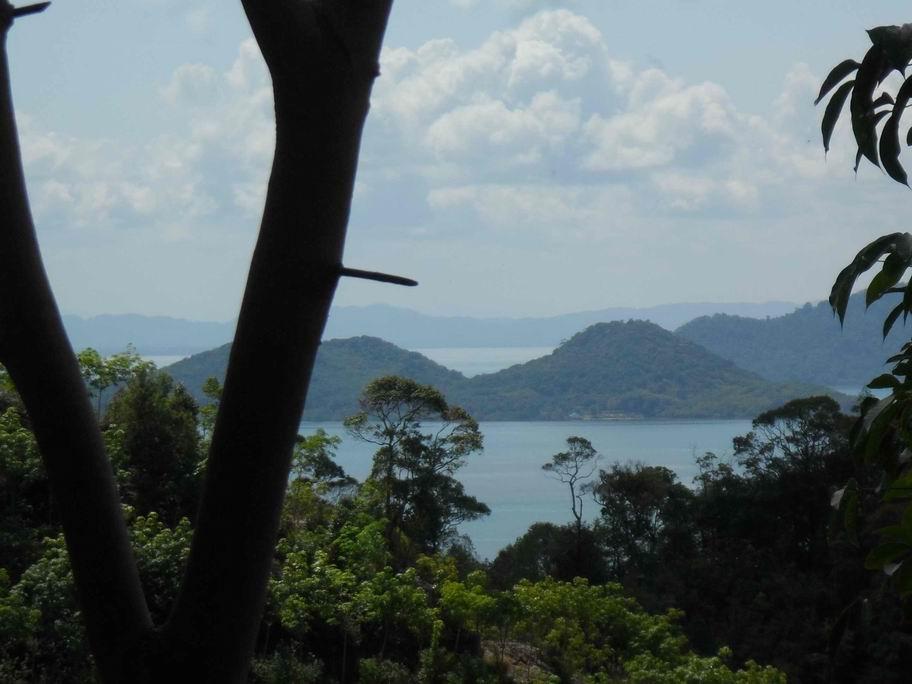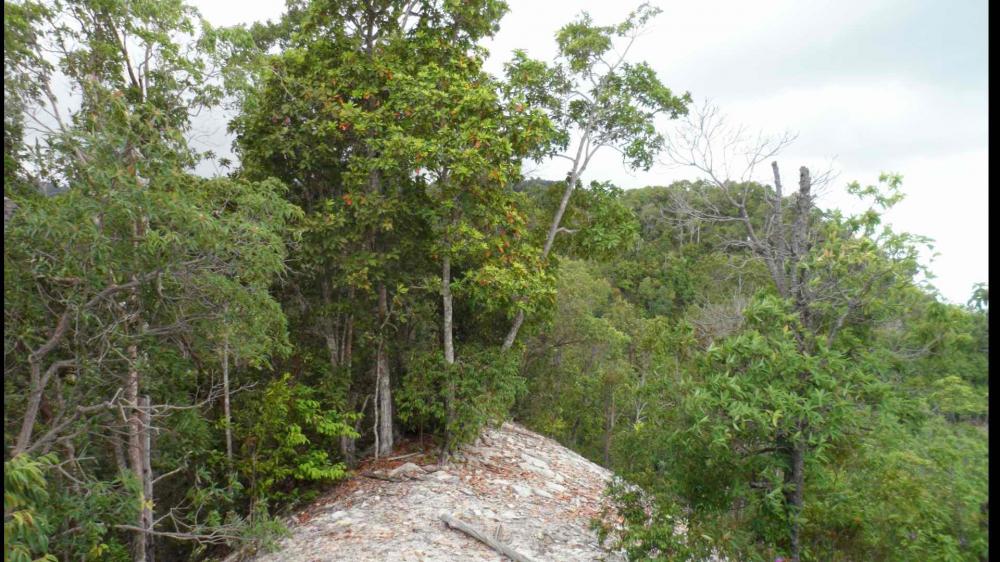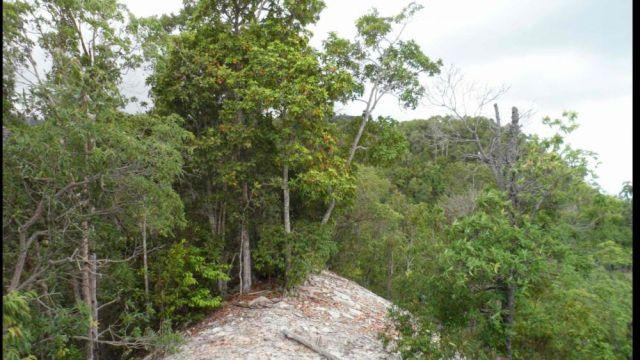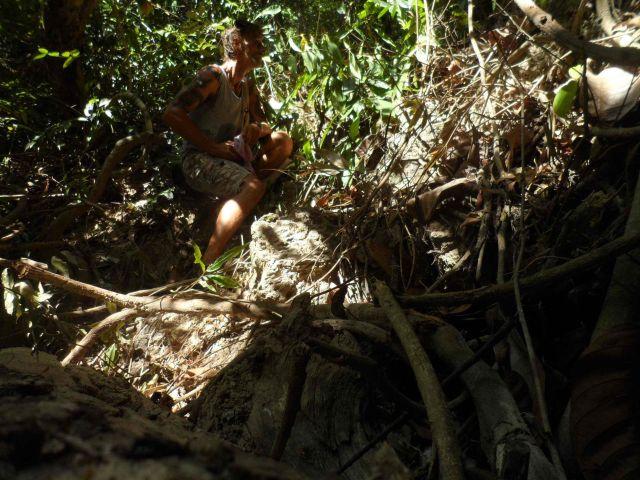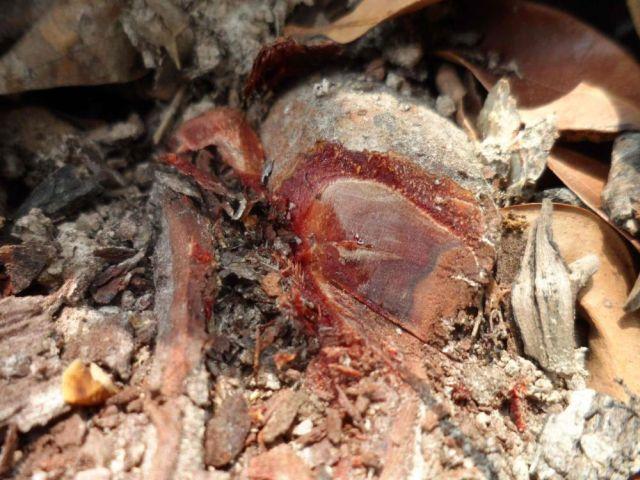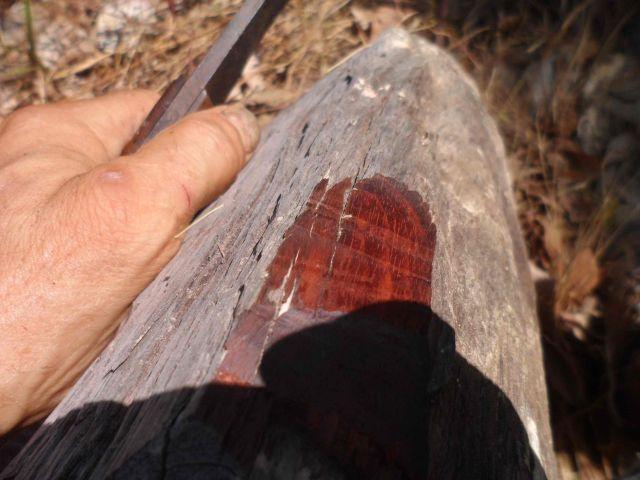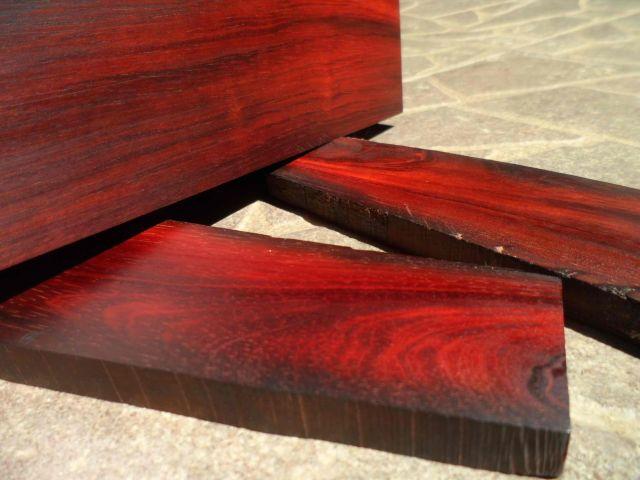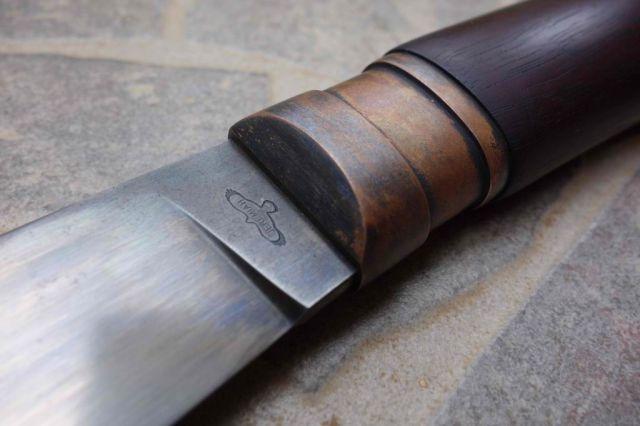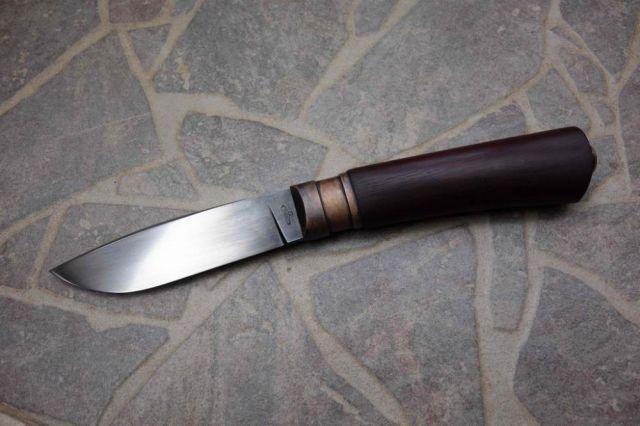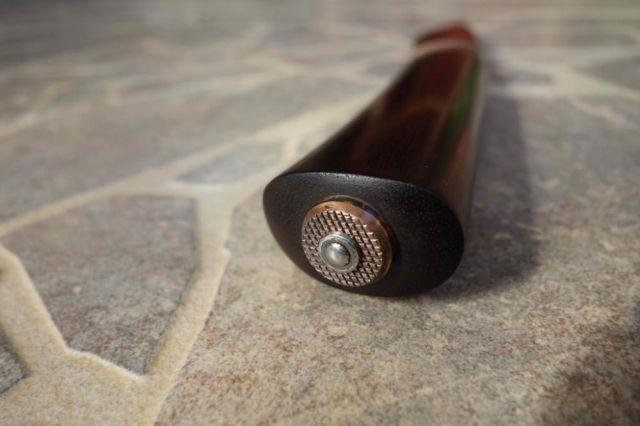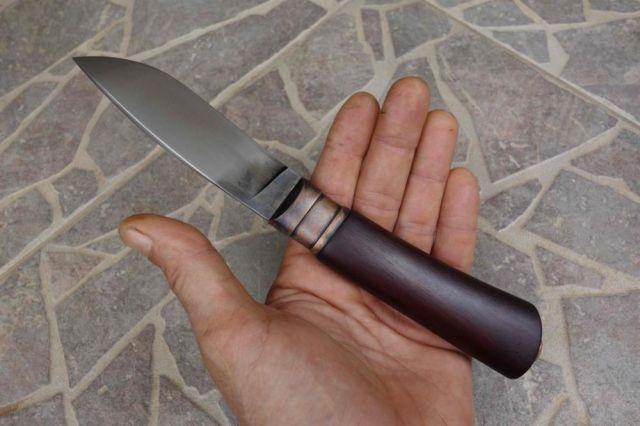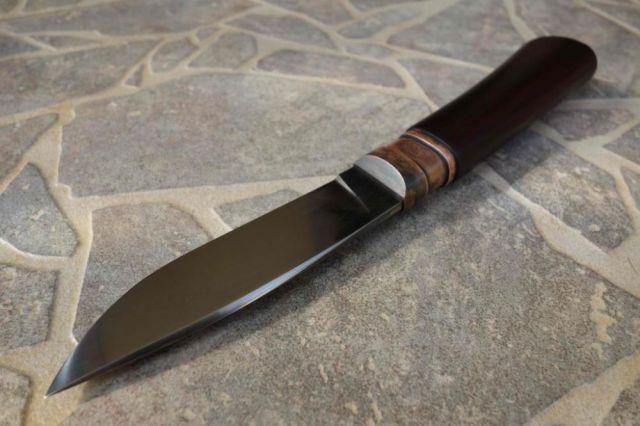....is a result of the dazzling Andaman sun and the lime stone mountain ridges covered with evergreen rainforest.... O7 blade, copper ferrule and Ceylon iron wood(Mesua Ferrea). Overall length 250 mm and the tang peened over the butt. Jamb ----------------------------- The photos have been resized and the following text and additional photos added to this post. The order should be wood photos first and then the knife photos. The soft wear got them out of order. The reason why the nature images are important for my knives: - they give an idea of the high grade of identification I have for the jungle, its trees and their woods.They give an impression under which conditions those trees exist and grow.Only rock slits, ground limestone and some dust of dry leaves and branches that supposed to be soil, and several months without water.I live in the same environment and watch them, and it is fascinating. A very important fact is that the wood I use is politically clean.no tree has to fall for my knives.they given to me by nature.Mostly they are falling because of the steep mountain slope, when the tree grows to the point where its crown or timber going out of stand and balance.But most of them are so strong and developed a strong, penetrating root fork into the mother stone, Diseases and insects taking their toll also. But they are not plenty. 'some people may think that it is easy go into the jungle and just take out some wood, but it is not easy at all.The images give an idea how the jungle can wear You down...in fact it is simply dangerous and highly fascinating.those mountain ridges are still rarely touched by man, because climbing up there in 38 degree celsius and with 95% air humidity is very hard. it starts with passing the secondary jungle, the typical green wall, thorns and sharp arrow-like shooting branches,red, black and green ants with their overhelming assaults, carpenter ants are my favourites(they cut you bloody red open).Once passed secondary forest coming to the canope, the old primary jungle which is open and easy to go on, and very beautiful...and then on the ridges it so beautiful that can make you wet eyes...mostly nearly 360 degree surrounding view over the ocean, the islands with their jungles...some ridges are so narrow, sometimes 3-5 meters wide only, that a photo looks like taken with a fish eye camera....it looks almost nearly unreal like in a tale.... .Coming down with 60kilo chunk ironwood in the backpack on such unpredictable ground is even more difficult, and the snakes are there too.Mostly Malayan pit vipers, King cobras and monocled cobras, you really have to watch out and never forget to search for "the" snake all the time.problem is not the cobras they give you acoustically and visually the signs that they are there, hissing, standing up, spreading the hood(whatch out for the spitting ones).....good snakes, but the bigger problem are those that do not flee and just hide quietly, and they so good camouflaged in the dry leaves on the ground, that you only have the chance to see the move of the snake taking attacking position....and always means, you do not see them dosent mean they are not there,...why I am telling this about snakes? because I often take the risk disturbing a snake when moving a root chunk which is often taken for shelter and for resting by snakes . adding red scorpions, brown little yellow scorpions, their bite hurts very nasty and the poison is quite strong, wild forest bees and wasps are even more dangerous, critters and biters everywhere....You come out of the jungle and You are covered with heavy scratches, small and medium flesh wounds, bruises all over the body, the jungle can make you so exhausted that you do not really feel pain anymore......and You have to get out before it gets dark....and often it is a long way back home, all this is a part of the background behind my knives all this I welcome with my whole heart, it is a important part of my inspiration, my motivation and above all, of my knives , of myself. it is the most beautiful part of knife making, sourcing the wood for the handles, I love hanging around in the jungle, study the trees and the wildlife, I met Rangers in the jungle and wood poachers, small Ozelot-like wild cats, jungle boar and deer, different species of apes and birds that are so spectacular beautiful that it easy finds a way into the spirit of my art... a knife maker can buy some commercial Padouk which is from the exported timber, but nobody can buy some Padouk root, or wild grown Mountain Ceylon ironwood, how special that material is, is shown with the pictures too. well, I can go on like this and write a novel but I hope it is good enough to make You understand my world and the reasons of my knives. with respect to all of You Thank You Jeremiah

